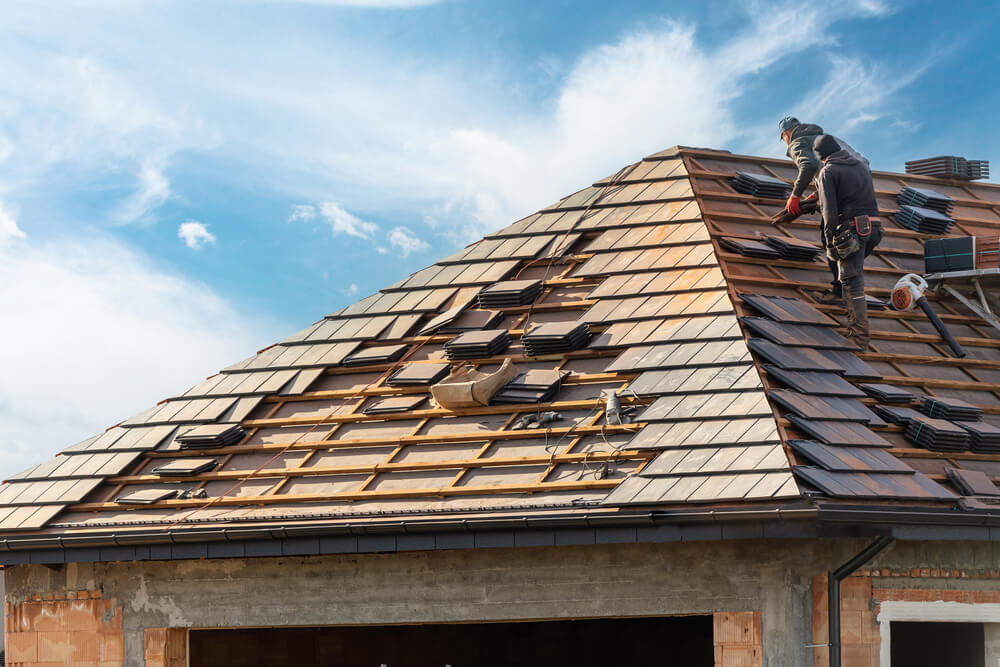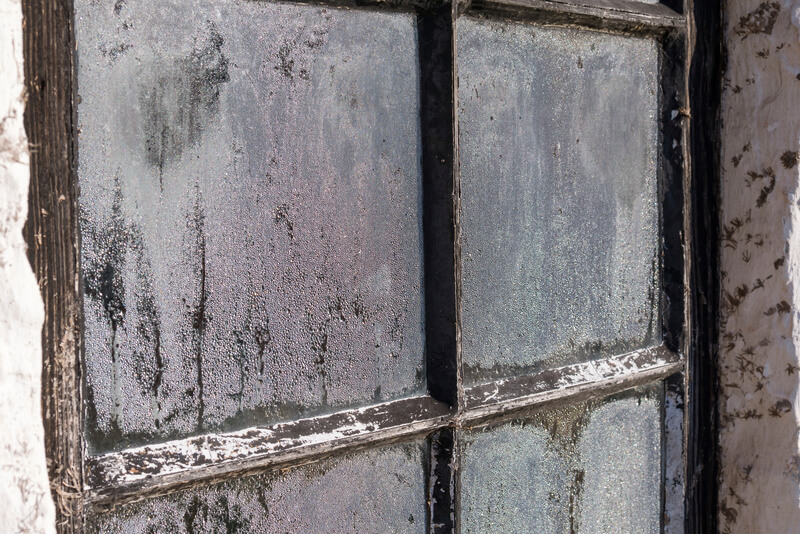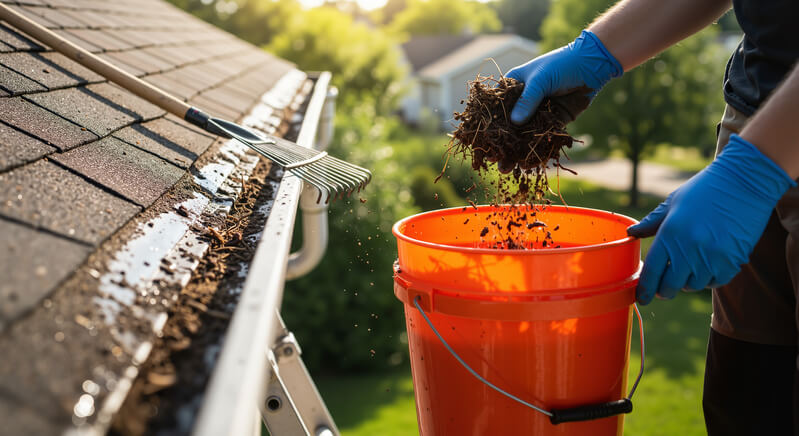Replacing a roof is a major project, and one of the first questions homeowners ask is, “How long will it take?”
Whether you’re dealing with storm damage, replacing an aging roof, or preparing to sell, knowing the timeline helps you plan ahead and minimize disruption.
Most roof replacements take less time than people expect; however, several factors can influence this timeframe.
In regions like Chicagoland, Northwest Indiana, and across the Midwest, planning around seasonal weather is an important part of the process.
In this post, we’ll break down how long roof replacement usually takes, what can speed it up or slow it down, and what to expect during the project.
Key Takeaways
- Most residential roof replacements take 1 to 3 days under normal conditions.
- Size, roof complexity, material choice, and weather all affect how long replacement takes.
- Permits, inspections, and material availability can delay a project if not planned for early.
- Clearing work areas and staying in touch with your roofer help keep projects on schedule.
- Planning around Midwest weather, avoiding extreme heat or freezing temperatures, gives the best chance for smooth progress.
So… How Long Does a Roof Replacement Usually Take?
For most homes, a roof replacement takes 1 to 3 days once the materials are ready and the crew gets started. However, several specific factors can impact the timeline.
Here’s what really affects how long it takes.
Roof Design and Complexity
In areas like Chicago, many homes feature gable or hip roofs, which are relatively straightforward to replace. However, older neighborhoods may have Mansard or cross-gable roofs, adding complexity and time to the project.
Roofing Material Choices
Asphalt shingles are the most common roofing material in both Chicago and Indiana due to their affordability and ease of installation. Opting for materials like metal, tile, or slate can extend the installation timeline due to their weight and installation requirements.
Midwestern Weather Patterns
The Midwest experiences a wide range of weather conditions. Spring and fall offer the most favorable conditions for roof work. However, summer storms, high humidity, and winter snow and ice can cause delays.
Existing Roof Condition
If your current roof has multiple layers or hidden damage, such as rotted decking, additional time will be needed for removal and repairs. This is particularly common in older homes found throughout the Midwest.
Contractor Scheduling and Experience
Working with a local, experienced roofing contractor familiar with Midwestern weather challenges can help keep your project on schedule. Their knowledge of regional permitting processes and potential weather delays is invaluable.
What a Typical Roof Replacement Timeline Looks Like
Most residential roof replacements follow a simple day-by-day process, assuming the weather stays clear and no major surprises come up.
| Stage | Time Estimate |
| Initial Inspection & Estimate | 1–3 days |
| Material Selection & Contract | 1–2 days |
| Permit Processing (if needed) | 1–3 business days |
| Material Delivery | 1–2 days |
| Roof Replacement (Install) | 1–3 days |
| Cleanup & Final Inspection | Same day as install completion |
How to Help Your Roof Replacement Stay on Schedule
While some delays are unavoidable, a little preparation can make a big difference in keeping your roof replacement moving smoothly. Here are a few simple ways to help:
Secure Your Permits Early
In Chicago, a permit is typically required for roof replacements, especially if structural work is involved. The city’s Express Permit Program offers a streamlined process for certain reroofing projects.
In Indiana, while minor repairs may not need a permit, full replacements often do, depending on local regulations. Checking with your local building department early can prevent unexpected delays.
Choose and Order Materials Ahead of Time
Confirm your material selection early, especially if you’re considering special-order products like designer shingles or metal roofing. Local suppliers can help speed up the process.
Clear Access Around Your Home
Move vehicles, outdoor furniture, and anything else that could block the crew’s access to your driveway or yard. A clear workspace helps the project move faster and safer.
Stay in Communication with Your Roofing Contractor
Weather in the Midwest can be unpredictable, especially during peak summer heat or sudden spring storms. Regular updates help you stay flexible if schedule adjustments are needed.
Plan Around Seasonal Weather
Temperatures in the Midwest often climb above 90°F in summer and drop below freezing in winter. Whenever possible, scheduling roof work during the milder spring or fall seasons gives the best chance of avoiding weather delays.
Plan Ahead for a Smoother Roof Replacement
Replacing your roof doesn’t have to mean weeks of waiting and disruption. In Chicagoland, Northwest Indiana, and across the Midwest, careful planning, smart scheduling, and the right team can keep your project moving on time.
By choosing your materials early, securing permits, and working with experienced local contractors, you can avoid common delays and stay on track, even when the weather tries to throw you off.
Ready to start your project?
Contact M&M Home Remodeling Services at (800) 930-2905 to get a free, reliable estimate for your roof replacement today.





